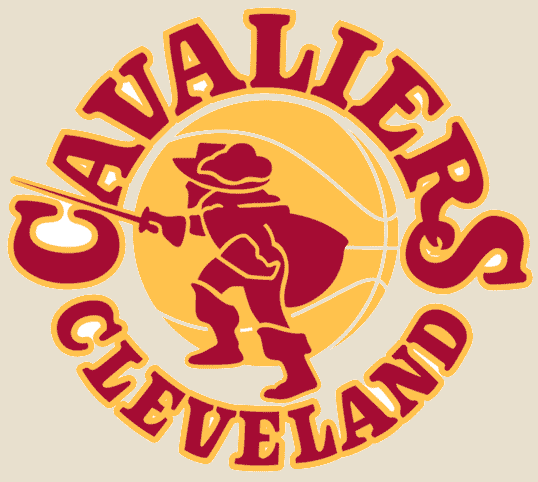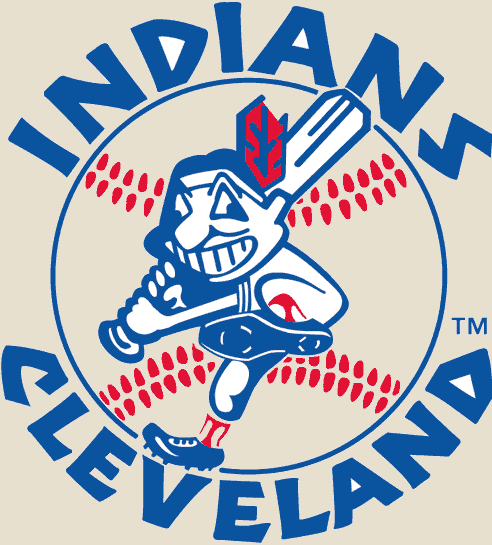The Ultimate MLB Fairweather Fan Metric
We Take Sabermetrics to the Grandstands for a Fresh Look at 2014 Attendance Rates

by Andrew Clayman
Despite fielding a young, competitive team for a fourth consecutive season, the Cleveland Indians once again find themselves at the very bottom of the standings at the All-Star Break—not the Central Division standings, mind you, but the Major League Baseball Attendance rankings. For both the disillusioned fans and the die-hard devotees who berate them, the nightly swaths of empty seats at Progressive Field are virtually taken for granted now. But what brought us to this point? Was it the ticket prices? The bad weather? The low payroll? The lack of superstar players? Basically, why aren’t people getting their asses to the ballpark? Well… while others are content to ask the questions, East of Ehlo seeks to answer them. This is the Ultimate Fairweather Fan Metric!
If yee be timid in the face of obsessively detailed statistical analyses, tread no further. For the Fairweather Fan Metric is—for lack of a better term— numerically psychotic. The goal was simple. By indexing some of the top excuses for low ballpark attendance, and how these factors affect all 30 Major League ball clubs, we can finally get a clearer sense of how unique the Indians’ circumstances are—and by further extrapolation—how fickle Cleveland fans are compared to the rest of the league.
To come up with our final Fairweather Fan Ratings, a three-step process is required.
1. Tally Up How Each MLB Team Ranks in 9 “Fan Attendance Discouragement” Categories, aka FAD’s
2. Use the Team’s FAD Number to Establish Its’ “Projected Attendance Rate” (PAR)
3. Compare That PAR to Each Team’s Actual 2014 Attendance Rate to Get their official +/- Fairweather Fan Rating for the season thus far.
Simple, right? No, of course it isn’t! And there’s loads of shady math in there, too. But when we’re done, we’ll know which fans keep the faith in trying times, and whether the Tribe’s fan shortage is understandable or unforgivable.
Introducing the Fan Attendance Discouragement (FAD) Categories
So, you want to calculate how much a team is crushing its fans’ spirits before even taking the field? No problem. These are nine of the most often cited factors that can hurt a team’s attendance rate:
1. Team Payroll (PAYRL): We hear this one routinely with the Indians. “Dolan is cheap,” etc. When a team spends big dough on free agents, the fans tend to feel like a commitment to winning has been communicated. The 2014 team payrolls below were yoinked from Deadspin.
2. Ticket Prices / “Fan Cost Index” ($FCI): The people over at fancostexperience.com came up with each MLB ballpark’s average costs based on the prices of four (4) adult average-price tickets, two (2) small draft beers, four (4) small soft drinks, four (4) regular-size hot dogs, parking for one (1) car, two (2) game programs and two (2) least expensive, adult-size adjustable caps.
3. TV Market Size (TV): Teams in big cities ought to have an easier time filling a stadium, right? Here, our market sizes were determined by Nate Silver back in his Baseball Prospectus days, as he uniquely split up market share for cities with two teams.
4. Postseason Drought (PSD): When your season always ends before the leaves change, your fans may become disenchanted.
5. Ballpark Capacity (BPC): A bigger stadium is, presumably, harder to fill.
6. Ballpark Quality (BPQ): As ranked on numerous factors by Joe Mock at BaseballParks.com. He has Wrigley at #1 and Tropicana Field at #30 so that was good enough for us.
7. Weather (WEA): We took each city’s average mean temperature, rainfall, and wind speed from April through September and came up with a composite ranking (all stadiums with roofs were given an average of 72 degrees, with 0 rain and wind).
8. All-Star Players (STAR): Number of current players on the club with multiple All-Star Game appearances (updated to include 2014 All-Stars).
9. Current Winning Percentage (W%): Obviously, a winning team is a more watchable team. These stats are through July 13, 2014-- the All-Star Break.
Now, using these FAD categories, it’s time to see how all the MLB teams stack up, ranked from 1 (best) to 30 (worst) in each column. We’ll then add those nine separate rankings together for each team (rotisserie league style) to figure out their Fan Attendance Discouragement (FAD) total. The higher your FAD number, the more excuses your fans have NOT to show up.
The MLB Fan Attendance Discourgement Standings: 2014 All-Star Break

Scientifically speaking, looks like we might be on to something so far, eh? It’s hard to argue that any fan base has more discouragement to overcome than that of the Houston Astros (FAD 183), losers of 100+ games in 2011, 2012, and 2013. Even with a fine crop of young prospects, the team’s rock bottom payroll and hopeless chances in the AL West have their average fans a long way from thoroughly enthused. On the opposite end of the spectrum, the glamorous Los Angeles Dodgers (FAD 82) have the game’s highest payroll, beautiful weather, a boatload of star players, and one of the largest media markets in the country.
Meanwhile, there’s the Indians, floating around with the ninth highest FAD in baseball at 152. Comparatively speaking, it doesn’t look like the cost of a ballgame ought to be a huge deterrent for Northeast Ohioans. Progressive Field is actually the third most affordable ballpark experience as FCI goes. The weather, on the other hand, ranks tied for dead last. But maybe the biggest factor separating the Indians from the other bottom feeders is the fact that they actually went to the postseason a year ago—the only team out of the 12 most discouraged that can say that.
“Projected Attendance Rate” vs. “Actual Attendance Rate”
Ok, now it’s shady math time! Somehow, we’re going to use the FAD totals from above to come up with an estimate of what each team’s attendance percentage (% of the stadium’s capacity filled each game) SHOULD reasonably be—presuming fans reacted solely to the circumstances laid out before them. In other words, this is a world without irrational pessimism nor devotion. It's fandom in a vacuum.
To do this, we’re going to make up a somewhat arbitrary but entertaining formula.
First, we can calculate that the league average FAD lands at about 135. We also know that the average attendance percentage in MLB over the past few years has been a pretty stable 70%. So the goal from there is to correlate those two league averages. Here’s how it (sort of ) works in the specific case of the Tribe...
With a FAD of 152, the Cleveland Indians are 17 points, or 12.6%, above the 135 league average for discouragement. To project how that level of depression should affect the team’s attendance percentage, we multiply 0.70 (representing the average MLB attendance rate) by 0.126 (the Indians' 12.6% above-average FAD). The result is 0.088, or a 8.8% projected DECLINE in average nightly attendance thanks to the team’s various discouraging elements. Hence, we should reasonably expect Progressive Field to be 61.2% filled for most games. And if you think that seems high, do realize that this is science (and that this team made the damn playoffs a year ago).
So, let’s see how the Tribe fans are really doing through the first half of 2014 and how they stack up with other FAD-heavy fan bases when it comes to keeping the faith.
The Official MLB Fairweather Fandom Rankings: 2014 All-Star Break

Featured Columns
Subjects
And there you have it. While we can expect all of the +/- numbers above to rise as the summer weather balances out the spring, the cold hard truth of the moment is that the Tribe’s attendance woes defy even the most reasonable excuses one can muster. According to the amazing Fairweather Fan Metric, Indians fans have only managed to out-perform two of the most notoriously disinterested fan bases in the game—the retirees in Tampa and the couldn’t-even-sell-out-World-Series-games contingent in the ATL. It’s also worth mentioning the concrete fact that the Indians have—BY FAR—the lowest attendance numbers and percentage in Major League Baseball this season. At 42.4%, Cleveland’s nearest competition is the Rays, Mariners, and White Sox at right around 50%. And it’s not as if the weather in Chicago has been decidedly better than Cleveland.
Other interesting aspects of the Fairweather Chart... As you would expect, Cubs and Cardinals fans are practically immune to FAD problems. They scored +26 and +25.4 Fairweather scores respectively, as attending baseball games is just engrained in the cultures of these towns. That said, anyone on the North Side of Chicago can tell you that, while the Cubs might be selling 80% of their tickets, far fewer than that are actually sitting in the seats.
Meanwhile, when it comes to fans in very similar situations to Cleveland (low payroll, small market, etc.), the trend of abandonment is strangely not as prevalent. The Royals fans—who haven’t seen a playoff game in 30 years—are actually close to right on point with their FAD attendance projection, filling a respectable 60% of Kaufman Stadium. The Twins, meanwhile, are slowly phasing out of “new ballpark mode” but are still selling 70% of their seats despite a frightening 172 FAD. Even the lowly Astros and Rockies are well exceeding their Projected Attendance Rates and drawing fairly well.
So, in the long run, perhaps this whole Fairweather Metric nonsense has only created more questions, rather than answering any. Maybe next time, I will include a category called “LeBron / Johnny Football Distractions" and see if that helps tip the scales.



